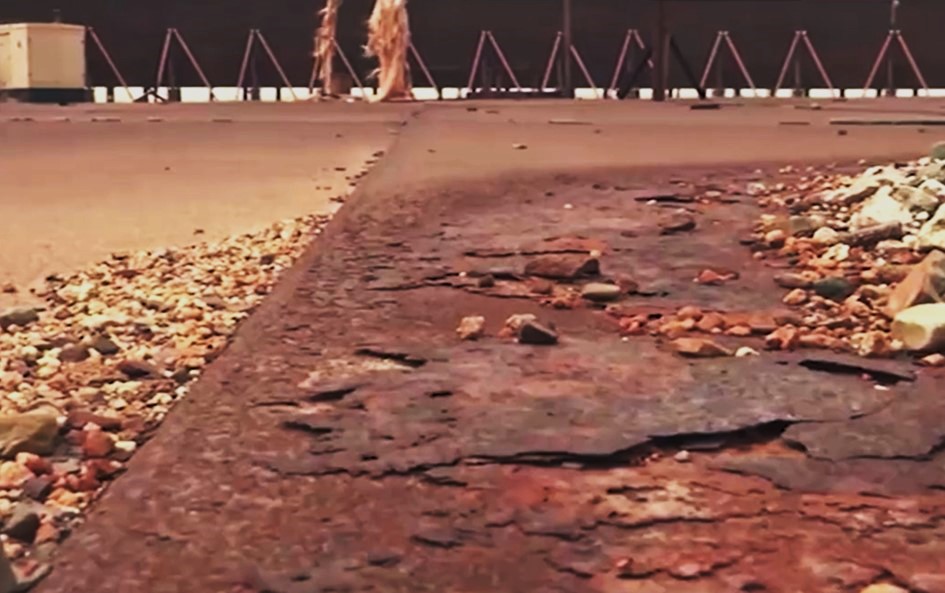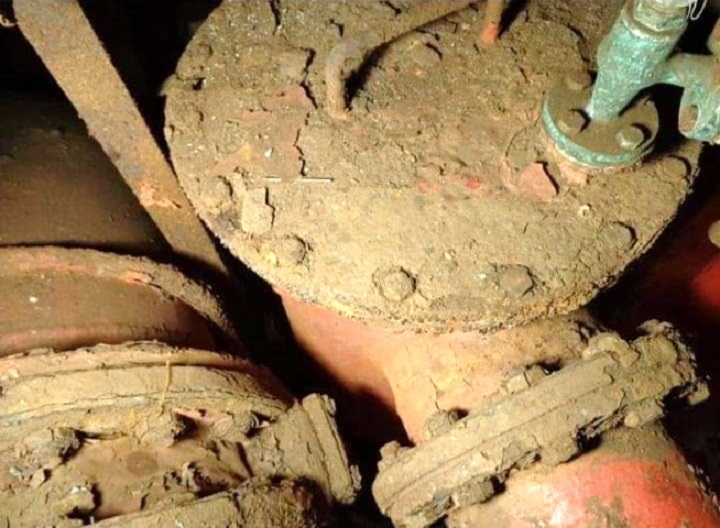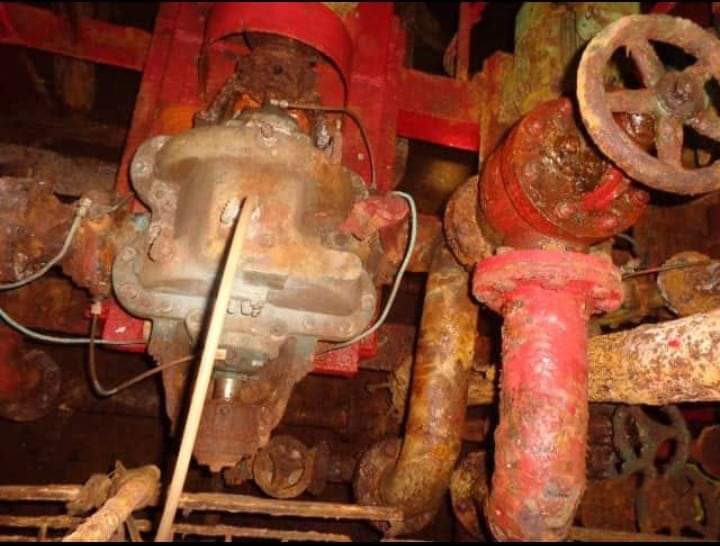By: Holm Akhdar – Sana’a
The FSO SAFER vessel is located approximately 8 km (4.8 n. miles) SW of the Ras Iss’a peninsula on the West coast of Yemen, permanently anchored at the same location for more than 30 years, without any drydocking or shipyard repairs.
Its iron hull was subjected to corrosion and decomposition, operating systems have been disrupted, and the firefighting system has stopped.
The FSO “SAFER” was converted to FSO in 1986 from the single hull oil carrier “Esso Japan”, initially built in 1976.
The FSO Safer oil tanker is connected to shore via a 24’’ pipeline on the seabed, and two 12’’ oil hoses leading up to a turret facility installed at the bow of the FSO, enabling the vessel to weather-vane free around the anchoring point.
Reports indicate that the vessel is partly loaded with approximately 1,148,000 barrels of Marib light crude oil in the 11 center tanks, and with 7 of the wing tanks partly filled with ballast water.

An Imminent Catastrophe
The 24’’ pipeline from shore and the two 12’’ oil hoses from the seabed to the FSO turret are reported still oil filled (assumed volume approximately 4,500 m3).
On May, 27, 2020, seawater seeped into the engine compartment. The leakage was contained after being temporarily repaired; however, that is unlikely to continue for long.
Due to water and ecological conditions of the area, frequent water seepage to the tanker Safer engines may lead to extremely severe and difficult-to-control oil spill.
Another alarming possibility for the FSO Safer is to explode, due to potential ignition of the gas amassed in its storage tanks.
All these threats could result in an ecological disaster whose impacts might destroy the potentials of the Yemeni marine environment.
The fishermen and farmers are potential subject to imminent sea disaster, in the event of oil spills from the dilapidated #FSOSafer oil tanker, abandoned off the Yemeni coast in the Red Sea.
Video by: #HolmAkhdar
FSO Safer: The Economic & Humanitarian Impacts#SalvageTheSAFER pic.twitter.com/jNAmKQiquv— حلم أخضر Holm Akhdar (@holmakhdar) March 2, 2021

Potential Danger from Steam Boilers
According to sources in the Safer Oil Production and Exploration Company (SEPOC), the vessel contains boilers operated with diesel, working on the production of inert gas, which prevents the occurrence of any explosion or any chemical reaction leading to the explosion in the tanks, but the boilers have been disabled for since 2016 because of the lack of Supplied with fuel oil.
When the normal operations of the FSO Safer were halted, the vessel ran short of fuel, causing the main steam boilers to shut down, leaving only a small diesel engine generator for supply of electrical power.
These boilers were initially supplying power for the large oil cargo pumps being used for discharging the stored oil cargo. They are now considered out of order, as they have not undergone any maintenance for 6 years.
The boilers were also used for supply of non-flammable inert gas to the cargo tanks, keeping the tanks and nearby surroundings explosion-free.
However, due to the lack of topping-up of inert gas to the tanks after the shut-down of the steam boilers, the cargo tanks as well as the main deck and surrounding area is considered subjected to hydrocarbon gases leaking from the tanks, resulting in danger of explosion or severe fire.
It is assumed that the lack of normal operation and maintenance for 6 years has resulted in a further deterioration of the vessel and equipment, as well as the oil hoses and pipeline to shore.
The document of the UNOPS Yemen indicate that “Due to lack of access for inspections, the American Bureau of Shipping (ABS) has withdrawn all certificates for FSO Safer, which invalidated all insurance agreements”.

Yemeni Islands and Potential Oil Spill
Yemen has more than 186 islands in its territorial waters. They are characterized by distinctive climatic and natural characteristics.
Some 152 of those islands are located in the Red Sea area, along the western coast of Yemen.
Out of the 152 Yemeni islands in the Red Sea, around 115 islands along the western coast might be subject to direct damage as they are on the path of imminent oil spill from FSO Safer.
These islands might lose their natural habitats and lose their biodiversity, as well.
A Possible Threats
Due to the assumed poor condition of the FSO Safer and the associated connections to shore, the lack of protection against explosion/fire, the risk for an uncontrolled incident has significantly increased, such as large oil pollution or explosion onboard, which may cause environmental impact on the coastline, ship traffic and the sensitive marine life.
The FSO Safer has not been inspected or maintained since 2015, leading to serious concerns about its integrity.
It is understood there is currently no oil leaking from the unit, but it is considered that the risk of an oil spill from the FSO Safer is increasing as its structure, equipment and operating systems continue to deteriorate.
FSO SAFER: Expected scenario in the event of an oil spill
Learn about expected consequences.
Produced by: Holm Akhdar#FSOSafer#SalvageTheSAFER #Yemen pic.twitter.com/iYrSYuIlhi— حلم أخضر Holm Akhdar (@holmakhdar) March 14, 2021
According to the document of the UNOPS Yemen in November, 2020 seen by Holm Akhdar, “the main risks associated with the FSO Safer are the possible structural failure of the unit due to the lack of maintenance that could result in a leak from storage tanks due to a fracture forming on the hull or as a large release due to an explosion from the build-up of flammable gases in the tanks”.
Greenpeace international say “All parties involved should do what is necessary to secure the diplomatic solution that would ensure a technical assessment of the Safer as a matter of urgency, to determine the status, identify immediate requirements as well as plans for ensuring the safe transfer of the oil onto another seaworthy vessel.“
The time is ticking on this potential environmental bomb.
A rupture of the single-skin hull or an explosion could result in a spill up to 4 times greater than that caused by the Exxon Valdez spill in 1989.#FSOSafer #Yemen https://t.co/jcl6pzUrvb
— Greenpeace (@Greenpeace) June 13, 2021
